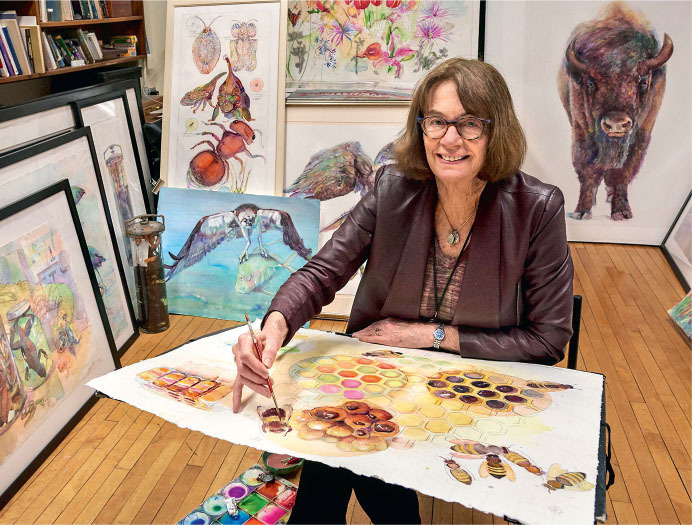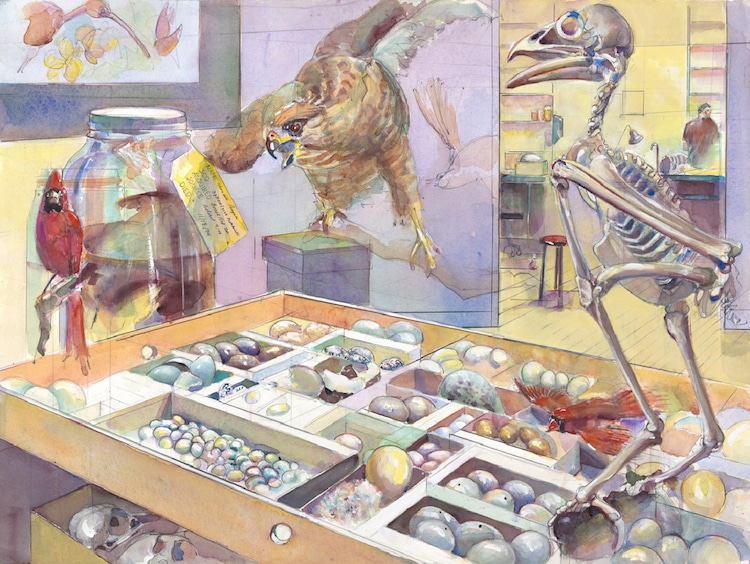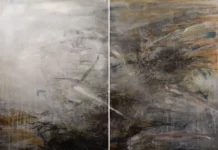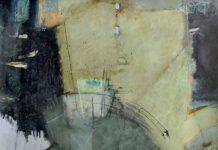Peggy Macnamara’s studio at Chicago’s Field Museum of Natural History, where she has been the artist in residence since 1990, is what you’d expect from an artist obsessed with wildlife: Stuffed birds in glass domes, eggs nesting in display cases, and a kaleidoscope of stacked watercolor paintings of animals.

Long before she painted her first animal, the Chicago resident went to the Museum constantly to paint the ancient statues, pottery, and other exhibits in the Chinese artifacts section. After 10 years, she’d worked her way through every one. One day, she stopped by the Field Museum’s Hall of Birds, and found herself a new subject. As she walked the spacious hall softly lit by long glass cases of (mostly American) birds, something about the shapes and colors seemed, to her, similar to the Chinese artifacts. She wasn’t fascinated with the birds as creatures of sinew and feathers, but as a menagerie locked in a hall of mirrors. (An early painting of a shorebird, for instance, makes it clear the animal is part of a display, by showing the creature from behind and capturing its reflection in the glass.) “I always included the case. I didn’t pretend that it was in habitat,” Macnamara said.

Macnamara’s style diversified with time. Occasionally, she would move from bird-as-exhibits to depicting the creatures with the “suggestion of habitat” — flocking through natural settings or even flying through the museum itself. Then, about 15 years ago, she was approached by Debby Moskovits, one of the founders of the Museum’s conservation arm. “She just came up behind me and watched me work, said Macnamara. “She knew me because I was here every day.”

Moskovits eventually recruited Macnamara to work for the museum, and later, for the Action Center’s conservation initiatives. Since its formation 23 years ago, the Action Center has provided scientific support for 18 protected areas spanning 26 million acres.

It was an odd move. Macnamara’s style was nothing like traditional naturalist’s meticulously labeled and anatomically precise sketches one might expect to find in a scientific document on conservation. She used watercolors like an oil painter.

Since her first conservation assignment, Macnamara’s work has become an integral part of the Action Center’s conservation efforts. She’s painted everything from birds to mammals to alligators, and worked on several educational books with the museum, including one on native Illinois insects. Several protected areas in Peru and Ecuador that the Action Center has supported have also had Macnamara paintings of their wildlife.
[Excerpted from an article by Ian Graber-Stiehl.]

A display of the artist’s work Field Museum collection, “Cabinet with Skulls,” is on display through Saturday, November 2, 2019.







